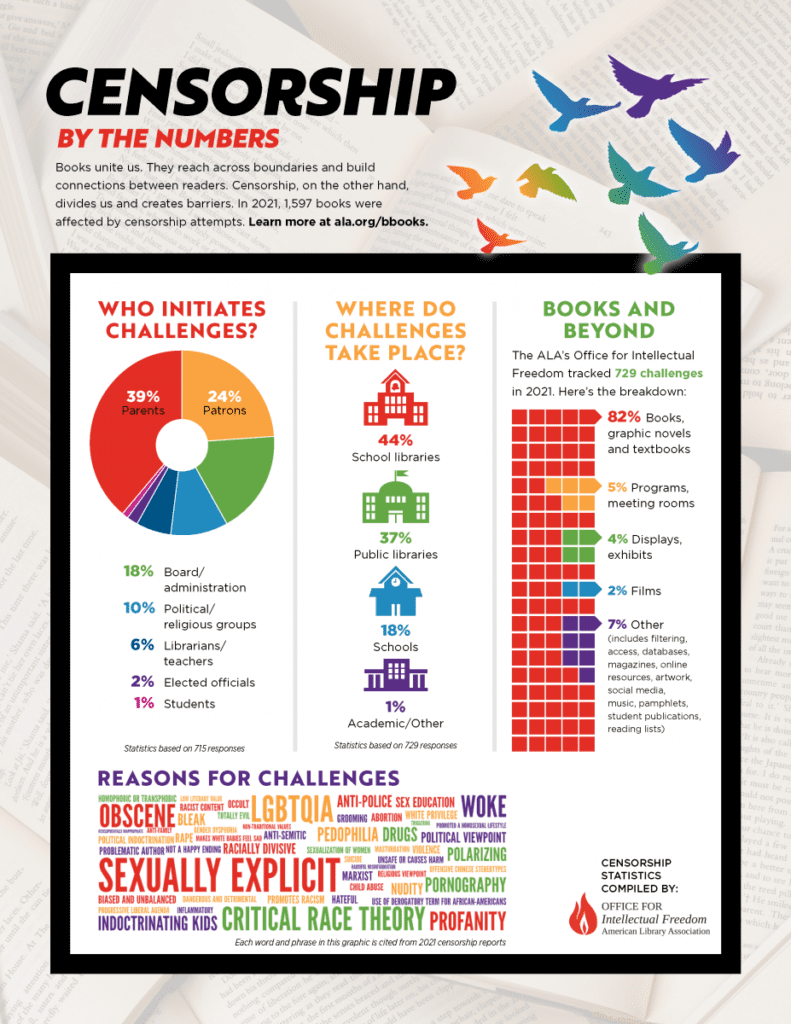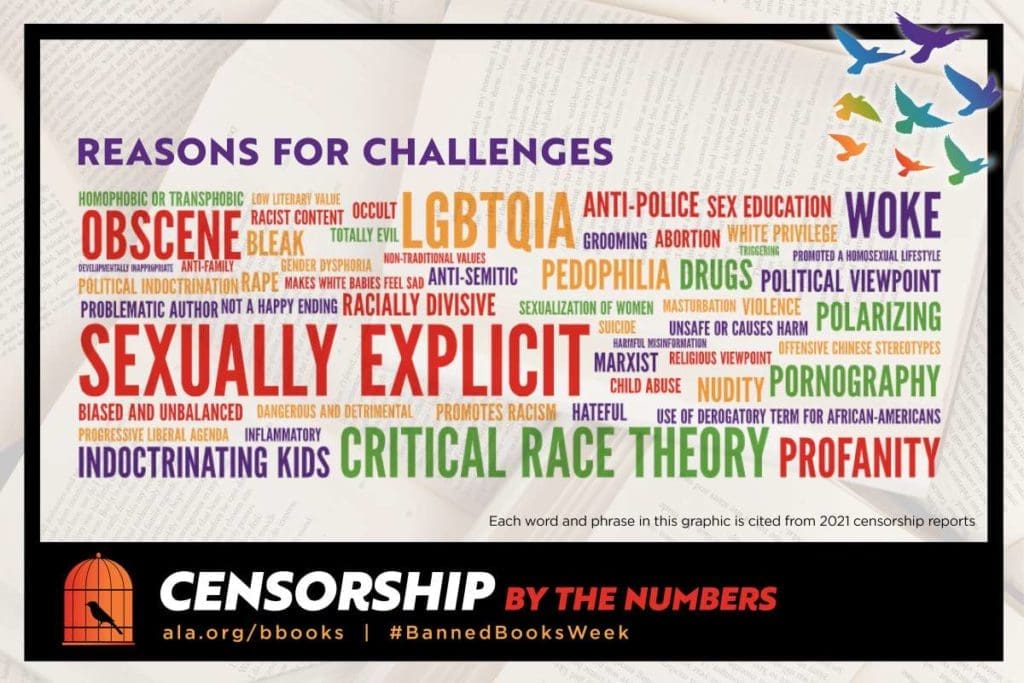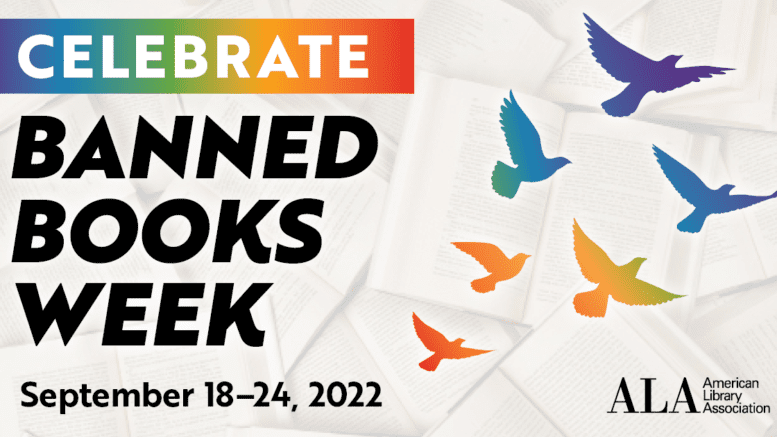Many parts of the country seem to be caught up in a book-burning frenzy. The New York Times reported in a recent article that “Attempts to ban books are accelerating across the country at a rate never seen since tracking began more than 20 years ago, according to a new report from the American Library Association.”
School systems in many states are banning books that accurately reflect the history of slavery and racism in America, and the persistent effects on our current life, under the guise of attacks on Critical Race Theory and the 1619 Project. The Cobb County School District has banned the use of both CRT materials and the 1619 Project in Cobb classrooms.
And books depicting the experiences of LGBTQ+ people have been removed from library shelves in many jurisdictions across the country.
Against this backdrop, the American Library Association observes September 18-24 as Banned Books Week.
The official website for Banned Books Week describes the purpose of the week as follows:
Banned Books Week is an annual event celebrating the freedom to read. Banned Books Week was launched in 1982 in response to a sudden surge in the number of challenges to books in schools, bookstores and libraries. Typically held during the last week of September, it highlights the value of free and open access to information. Banned Books Week brings together the entire book community — librarians, booksellers, publishers, journalists, teachers, and readers of all types — in shared support of the freedom to seek and to express ideas, even those some consider unorthodox or unpopular.
The Cobb Public Library is observing Banned Books Week
The Cobb Public Library posted the following about the library system’s celebration of the event:
We’re celebrating Banned Books Week all month long with our teen scavenger hunt! Scan each QR code hidden around the teen section at #SouthCobbLibrary to learn more about banned and challenged books.
.Start at the children’s desk to pick up your scavenger hunt sheet. Find each QR code and fill out the scavenger hunt sheet. Once you’ve found them all, return your scavenger hunt sheet to the children’s desk for a prize! This program is for teens in middle and high school.
The Top 10 banned books of 2021
The ALA Office for Intellectual Freedom (OIF) compiles lists of challenged books as reported in the media and submitted by librarians and teachers across the country.
Here are their results for 2021 (the 2022 list will be released in April of 2023):
- Gender Queer by Maia Kobabe
Reasons: Banned, challenged, and restricted for LGBTQIA+ content and because it was considered to have sexually explicit images - Lawn Boy by Jonathan Evison
Reasons: Banned and challenged for LGBTQIA+ content and because it was considered to be sexually explicit - All Boys Aren’t Blue by George M. Johnson
Reasons: Banned and challenged for LGBTQIA+ content and profanity and because it was considered to be sexually explicit - Out of Darkness by Ashley Hope Perez
Reasons: Banned, challenged, and restricted for depictions of abuse and because it was considered to be sexually explicit - The Hate U Give by Angie Thomas
Reasons: Banned and challenged for profanity and violence and because it was thought to promote an anti-police message and indoctrination of a social agenda - The Absolutely True Diary of a Part-Time Indian by Sherman Alexie
Reasons: Banned and challenged for profanity, sexual references, and use of a derogatory term - Me and Earl and the Dying Girl by Jesse Andrews
Reasons: Banned and challenged because it was considered sexually explicit and degrading to women - The Bluest Eye by Toni Morrison
Reasons: Banned and challenged because it depicts child sexual abuse and was considered sexually explicit - This Book is Gay by Juno Dawson
Reasons: Banned, challenged, relocated, and restricted for providing sex education and LGBTQIA+ content - Beyond Magenta by Susan Kuklin
Reasons: Banned and challenged for LGBTQIA+ content and because it was considered to be sexually explicit.
Some graphics about censorship and book-banning




